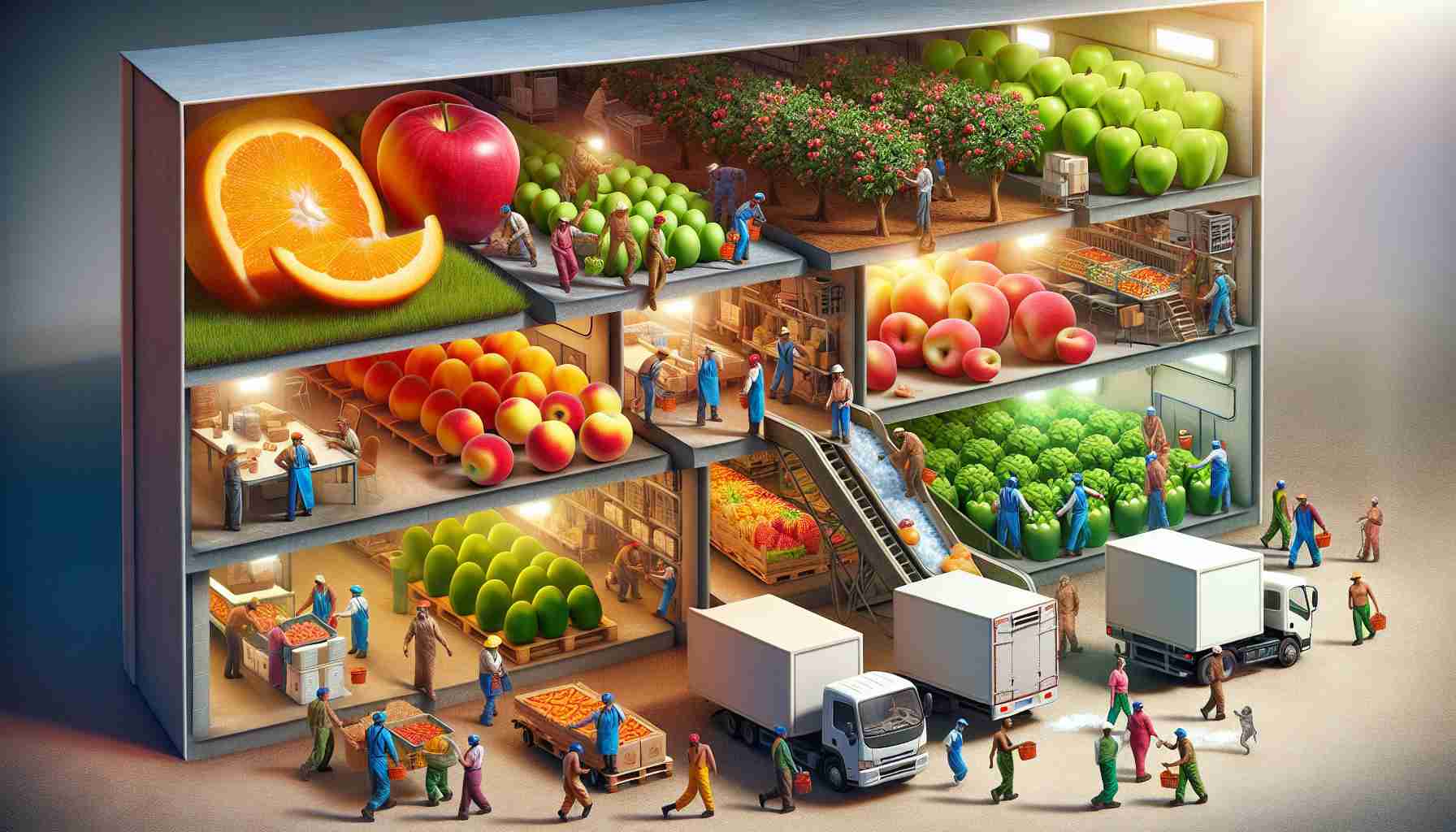When we think of orange juice, we might picture fresh, squeezed goodness, but the reality is quite different. Before hitting grocery store shelves, it often undergoes an extensive process that includes storage in massive stainless-steel tanks for up to two years. This method results in a sugary concentrate that loses the vibrant flavor common to fresh oranges.
Bananas, meanwhile, thrive thanks to a complex system of temperature management. The careful regulation of their environment ensures they can be transported globally, transforming them into an accessible staple rather than a luxury item. The bag of salad you grab at the supermarket is also far from simple; it’s engineered to extend freshness through innovative packaging technology that slows down the natural aging of greens.
Most surprising is the revelation that around three-quarters of the average American diet relies on what is known as the cold chain. This intricate network of refrigerated warehouses and transportation methods ensures that everything from meat to dairy remains fresh until it reaches our tables. Yet, as we’ve optimized food preservation, we’ve overlooked the broader implications of these systems on nutrition, ecology, and the environment.
In her enlightening book, one author argues that our contemporary food system has suffered due to excessive reliance on refrigeration. While convenient, this dependence has led to a loss of food diversity and might even impede our understanding of healthy eating and its impact on the planet.
The Hidden Journey of Our Food: Exploring the Cold Chain
The cold chain, often an unseen hero in the journey of our food, is a vital component of modern logistics that ensures the safe transport of perishable goods. This temperature-controlled supply chain is essential for maintaining the quality and safety of food products, from farm to table. However, beneath its surface lie a myriad of challenges and considerations that are crucial in our increasingly globalized food landscape.
What exactly is the cold chain?
The cold chain refers to the series of temperature-controlled supply chain processes that ensure perishable goods are kept at optimal temperatures during storage and transportation. This includes everything from refrigeration at farms and processing plants to specialized vehicles and cold storage facilities.
What are the key challenges associated with the cold chain?
1. Infrastructure Limitations: Many regions, especially in developing countries, lack the necessary infrastructure to support an effective cold chain. This can lead to significant food waste as products spoil before reaching consumers.
2. Energy Consumption: The refrigeration systems required to maintain the cold chain consume substantial energy. This raises concerns regarding the environmental impact and carbon footprint associated with food transportation.
3. Technological Gaps: While innovations in packaging and refrigeration are ongoing, there remains a gap between available technology and its implementation. Smaller producers often lack the resources to adopt advanced cold chain solutions.
4. Food Safety Regulations: Different countries have varying regulations concerning food safety which can complicate international shipping. Non-compliance can lead to products being withheld at borders, resulting in financial losses.
What are the advantages and disadvantages of the cold chain?
Advantages:
– Extended Shelf Life: The cold chain significantly extends the shelf life of perishable items, reducing waste and improving food security.
– Global Accessibility: Consumers can access a variety of foods year-round, regardless of seasonal availability in their region, thereby enriching diets and inspiring culinary diversity.
– Nutritional Integrity: Proper temperature control helps maintain the nutritional quality of food, delivering safer and fresher products to consumers.
Disadvantages:
– Cost Implications: The need for refrigeration leads to higher transportation and operational costs, which can be passed on to consumers.
– Environmental Impact: High energy usage contributes to greenhouse gas emissions, and refrigerants used in cooling systems often have harmful environmental effects.
– Food Quality Variability: Any breakdown in the cold chain can lead to spoilage and safety concerns, calling into question the reliability of perceived quality in food products.
Are there controversies surrounding the cold chain?
Yes, one significant controversy revolves around the reliance on refrigeration resulting in a homogenized food environment. Critics argue that while refrigeration makes exotic and out-of-season foods available year-round, it also fosters a decrease in local agricultural practices and food diversity. Furthermore, this dependency on cold storage may skew consumer perceptions about food freshness and quality, leading to an underappreciation of seasonal and locally sourced products.
Conclusion
The cold chain system is an indispensable part of today’s food supply chain, bridging the gap between global agriculture and local kitchens. However, as consumers, producers, and policymakers navigate this complex web, it is crucial to remain aware of the environmental and ethical implications tied to our food system. A balanced approach that leverages the benefits of the cold chain while addressing its challenges is essential for creating a sustainable food future.
For those interested in further exploring the intricacies of food supply chains and sustainability, visit IFOAM, an organization dedicated to promoting organic agriculture globally.

















